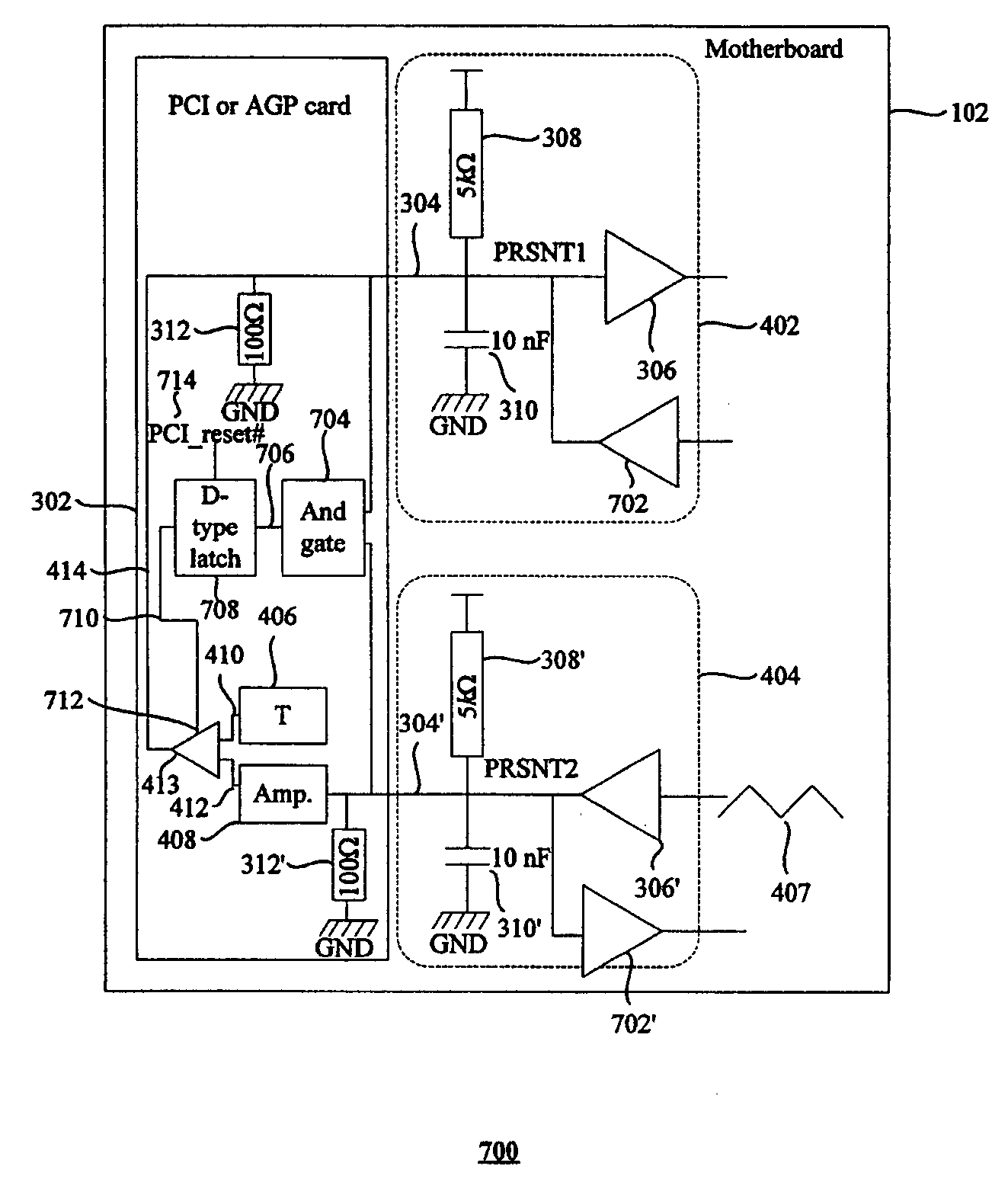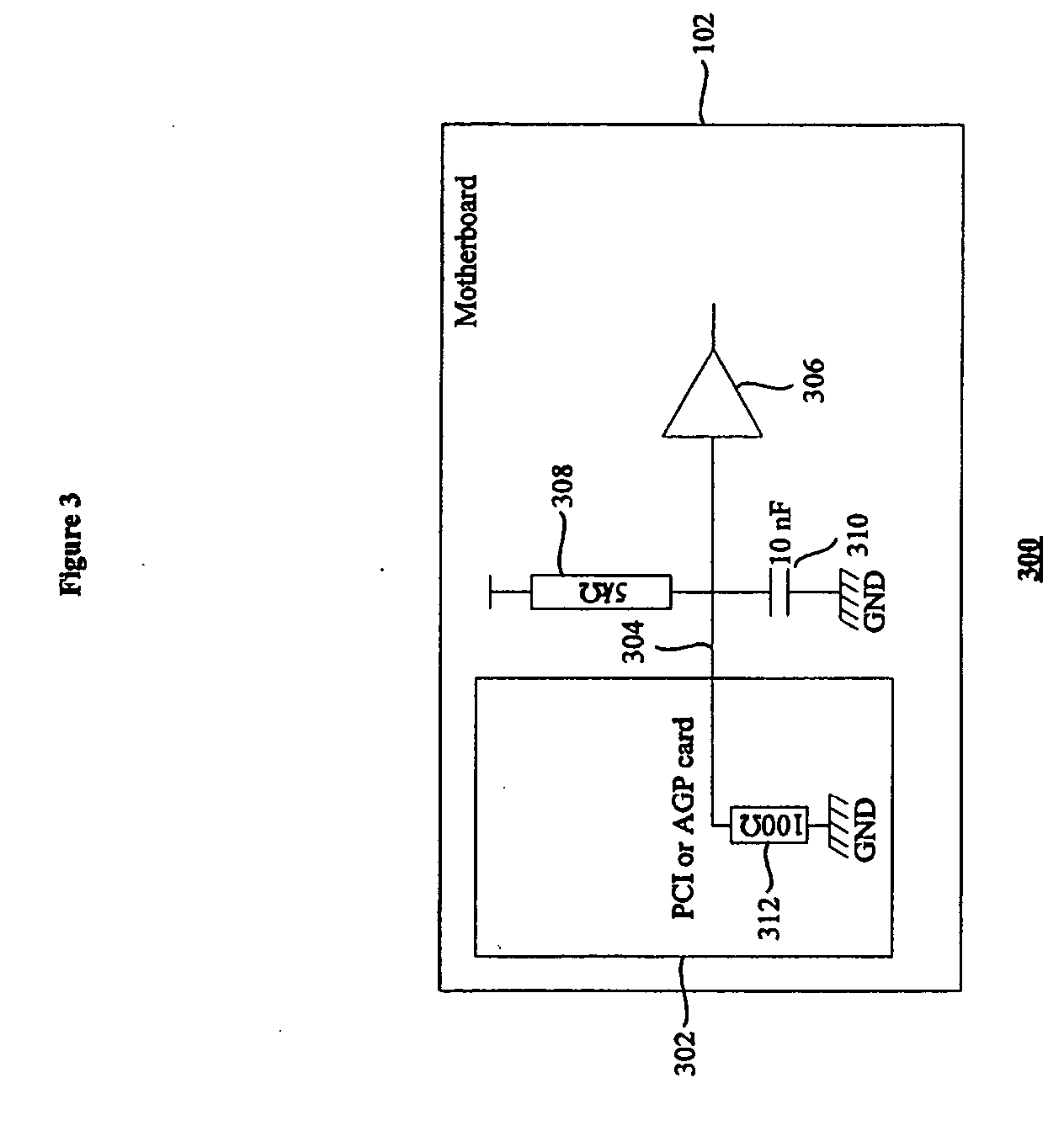Computer systems
- Summary
- Abstract
- Description
- Claims
- Application Information
AI Technical Summary
Benefits of technology
Problems solved by technology
Method used
Image
Examples
Embodiment Construction
[0043]FIG. 3 shows the electrical assembly 300 of a PCI or AGP card according to an embodiment of the present invention and a motherboard 102. It will be appreciated that only one 304 of the PRSNT pins is illustrated rather than the two PRSNT [1:2] pins 108 shown in FIG. 1. This is for the purposes of clarity only. It will be appreciated that the circuit shown in FIG. 3 is equally applicable to both PRSNT pins. The pin 304 is connected to a respective buffer 306 that has its input connected to VCC via a 5 KΩ resistor 308 and is connected to ground via a 10 nF capacitor 310. Within, or on, the PCI or AGP card 302, the pin 304 is grounded via a 100 Ω resistor 312. Replacing the direct ground connection of the prior art PCI or AGP cards with a pull-down 100 Ω resistor achieves the same signalling effect as shown above in table 1 while concurrently allowing a further signal to be transmitted via the pin 304. Therefore, embodiments of the present invention, rather than leaving the pin 30...
PUM
 Login to View More
Login to View More Abstract
Description
Claims
Application Information
 Login to View More
Login to View More - R&D
- Intellectual Property
- Life Sciences
- Materials
- Tech Scout
- Unparalleled Data Quality
- Higher Quality Content
- 60% Fewer Hallucinations
Browse by: Latest US Patents, China's latest patents, Technical Efficacy Thesaurus, Application Domain, Technology Topic, Popular Technical Reports.
© 2025 PatSnap. All rights reserved.Legal|Privacy policy|Modern Slavery Act Transparency Statement|Sitemap|About US| Contact US: help@patsnap.com



